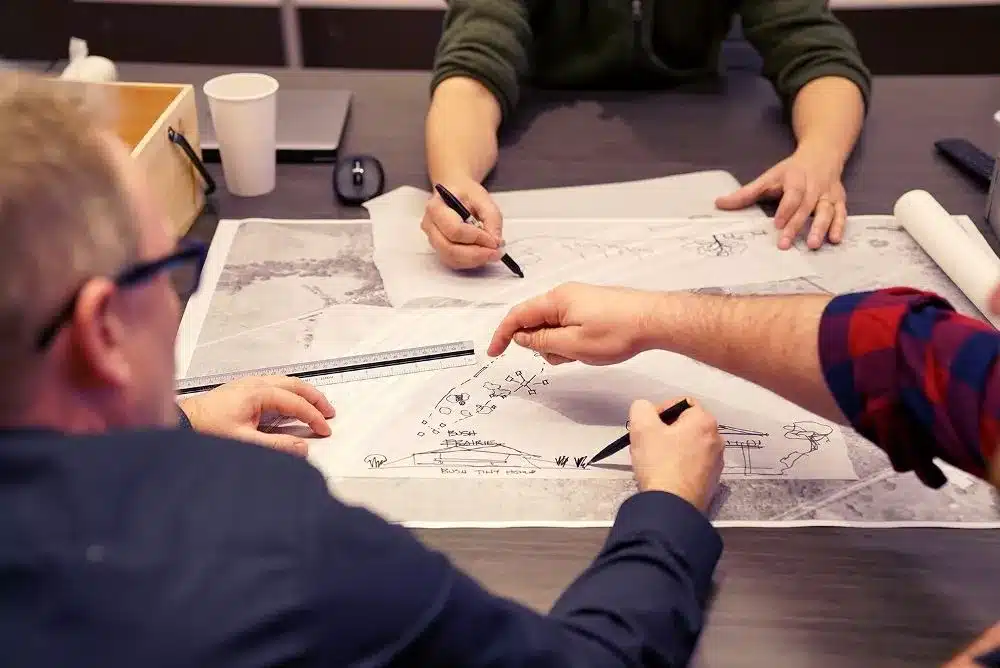Embracing Inspiration: The Benefits of the Charrette Design Process
Designing a church building is a significant undertaking that goes beyond mere aesthetics; it encompasses the spiritual, communal, and functional aspects of a place of worship. When embarking on such a project, it is crucial to consider an inclusive and collaborative approach that ensures the final structure resonates with the congregation and fosters a sense of belonging. One such approach that has proven to be highly effective with ministry organizations is the use of a charrette process.
A charrette is an intense period of design or planning activity that can serve as a way of quickly generating a design solution. The word charrette is French for ‘cart’ or ‘chariot’. Its use in the sense of design and planning arose in the 19th century at the École des Beaux-Arts in Paris, where it was not unusual at the end of a term for teams of student architects to work right up until a deadline when a cart would be wheeled among them to gather their scale models and other work for review. The furious work to apply the finishing touches came to be referred to as working ‘en charrette’.
In this blog post, we will explore 5 key benefits of designing a church building through a charrette process and how it can lead to a harmonious and inspirational space for worship.
Fosters Community Engagement: The charrette process is inherently community-oriented. It involves bringing together church members, clergy, architects, designers, and other stakeholders in a collaborative setting. This inclusive approach allows for diverse perspectives and voices to be heard, fostering a sense of community engagement. By involving the congregation from the early stages of design, a church building becomes a collective effort, instilling a sense of ownership and pride among the members.
Nurtures Creativity and Innovation: A charrette process provides an ideal platform for creativity and innovation to thrive. By encouraging open dialogue, brainstorming, and idea-sharing, the design team can explore new concepts, architectural styles, and artistic expressions. The collaborative nature of charrettes facilitates the emergence of unique and inspired design solutions that may not have been possible in a traditional design approach. This creativity can breathe life into the church building, making it a beacon of inspiration for both the congregation and the wider community.

Enhances Spiritual Reflection: Churches are spaces designed for spiritual reflection and worship. By employing a charrette process, the design team can create an environment that resonates with the congregation’s spiritual needs and values. Through open discussions and brainstorming sessions, the design can incorporate elements that evoke a sense of tranquility, serenity, and connection to the divine. The collaborative nature of the charrette process allows for a holistic approach to design, taking into account both physical and spiritual aspects.
Tailors Design to Specific Needs: Every church community is unique, with its own set of needs, traditions, and rituals. Designing a church building using a charrette process enables the customization of the space to meet these specific requirements. The collaborative nature of charrettes allows for open dialogue between the stakeholders, ensuring that the design accommodates liturgical practices, seating capacities, acoustics, accessibility, and other functional considerations. This tailored approach ensures that the church building becomes a facilitator of meaningful religious experiences.

Promotes Sustainability and Stewardship: In today’s world, environmental consciousness and sustainability are paramount. A charrette process can integrate these principles into the design of a church building. By involving diverse stakeholders, discussions can include sustainable materials, energy-efficient systems, and eco-friendly design strategies. Incorporating sustainable practices not only reduces the environmental impact of the building but also aligns with the church’s values of stewardship and care for creation.
Designing a church building is a sacred endeavor that demands careful consideration of the spiritual, communal, and functional aspects of worship. By embracing the charrette process, a church community can tap into the collective wisdom and creativity of its members and design professionals. Ultimately, a church building designed through a charrette process becomes a tangible expression of the congregation’s identity, values, and aspirations—a place that inspires and uplifts all who enter its doors.





Leave a Reply